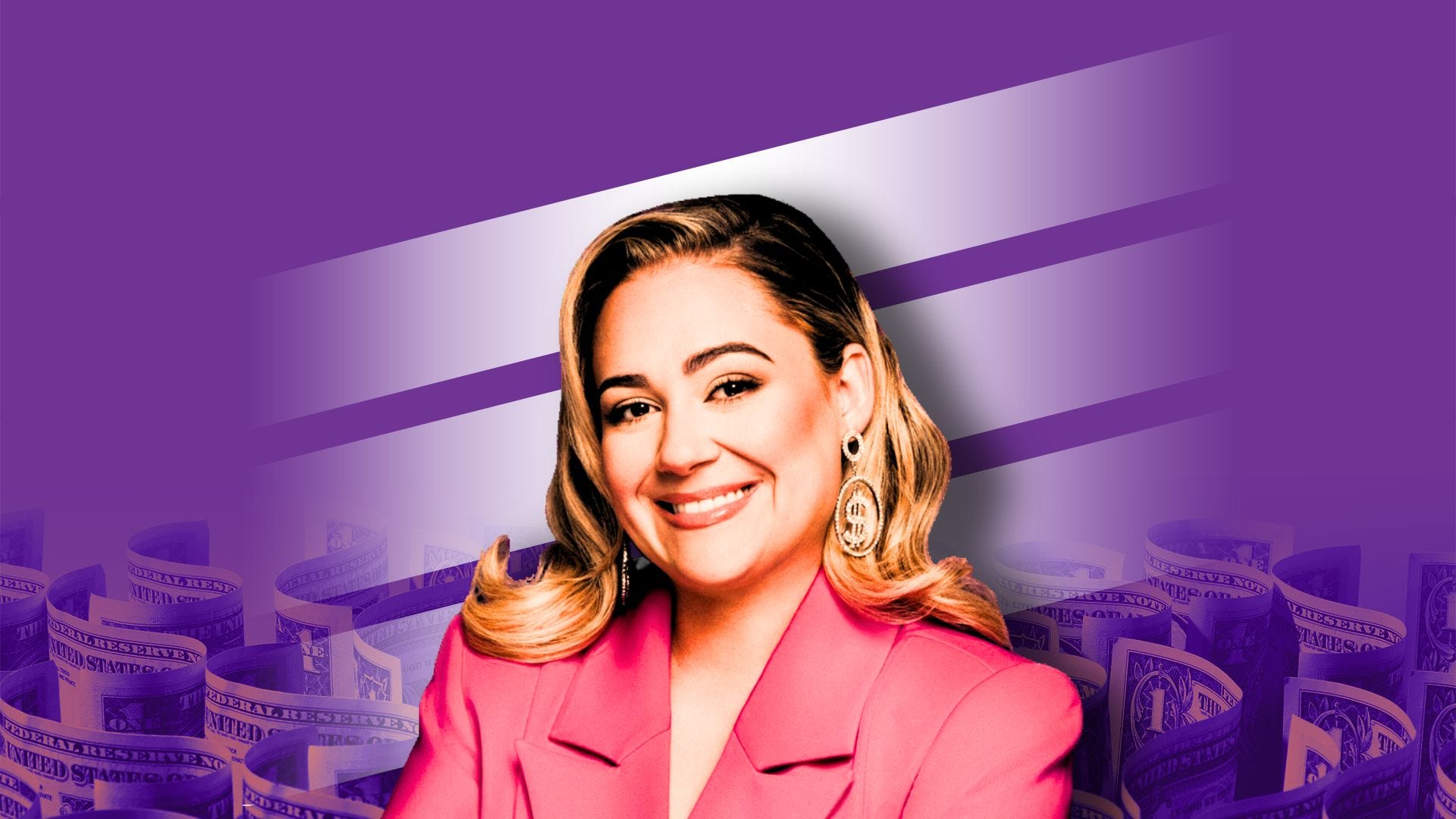Finance
LGBTQ small business owners struggle to find financing

Pixelcatchers | E+ | Getty Images
It’s not an easy time to be a small business in search of financing. For LGBTQ owners, the struggle has been even harder.
LGBTQ-owned businesses reported more rejections than non-LGBTQ businesses that applied for funding, according to a 2022 report from Movement Advancement Project, a nonprofit think tank that focuses on equality and opportunity, and the Center for LGBTQ Economic Advancement & Research (CLEAR).
With the tightening of lending standards, they could be at even more risk of falling behind, said Spencer Watson, president and executive director of CLEAR.
“The tighter economic conditions, the higher interest rates, the collapse of these smaller community banks and the resulting constriction of lending is certainly more detrimental for the LGBTQ community than non-LGBTQ community,” Watson said.
Concerns about the economy and lending conditions aren’t only on the minds of LGTBQ entrepreneurs. Overall, small business owners are skeptical about their future business conditions, said Holly Wade, executive director of the National Federation of Independent Business’ Research Center.
“The small business economy is being hindered by inflation, supply chain disruptions, and labor shortages,” she said. “While financing isn’t a top problem for small businesses, owners have expressed concerns about the health of the banking system for their business purposes in light of the banking turbulence in March.”
Yet, data show that when it comes to financing, LGTBQ small business owners are being left behind. In 2021, 46% of LGBTQ-owned businesses said they didn’t receive any of the financing they had applied to in 2021, according to the MAP/CLEAR report. In comparison, 35% of non-LGBTQ businesses that applied for funding were rejected, the report found. Much of the funding sought was through the Covid relief programs offered, Watson said.
“Those businesses were frequently smaller in size and they were also frequently younger and they had smaller revenues,” Watson explained. “They were struggling with those additional pressures because they were already in a weaker financial position to start with.”
Watson said there are similar themes emerging in the analysis of the 2022 Federal Reserve’s small business credit survey, which hasn’t been fully released yet.
While LGBTQ small business owners are very optimistic, they are also still more likely to report more kinds of financial challenges than non-LGBTQ businesses. Some six in 10 reported difficulties affording operating expenses over the last year, according to Watson, who prefers a gender-neutral pronoun. Most of the businesses are owned by people who identify as LGBTQ but their businesses aren’t necessarily oriented towards or servicing the LGBTQ community, they said.
Gavin Escolar
Courtesy: Gavin Escolar
Gavin Escolar, owner of The Chaga Company in San Francisco, is one of those small business owners that has had troubling finding financing. The 47-year-old gay man started his business, which makes products from chaga mushrooms, in 2018 by using his savings and credit cards. While he hasn’t been rejected for any loans he’s applied for, he has been only offered high-interest bridge loans from lenders to hold him over until a lower-interest small business loan becomes available, he said.
“They’re like, ‘oh yeah, you’re pretty much approved for this particular SBA loan, but it’s going to take like around six months for you to get it. But we have this other loan that you can bridge right now, that is 29.75%,’ or whatever exuberant cost,” Escolar said.
Right now he’s using loans from Square and PayPal and is hoping to figure out his next step so that he can pay down his credit card debt, buy inventory and do marketing. Escolar feels like the community needs more education on how to get the right financing.
“I’m only getting the higher [interest loans] because I feel like I don’t have established business credit,” Escolar said. “I’m fluctuating between my business credit and my personal credit. I don’t even know where to start on how to build a business credit.”
Forging her own path
Sarah Scala
Source: Sarah Scala
For 43-year-old Sarah Scala, going into debt wasn’t an option when she started her business, Sarah Scala Consulting. The Massachusetts company is an LGBT-certified business enterprise that provides leadership development, public speaking and leadership coaching.
Scala wanted to stay debt free, so she used her own savings and looked for opportunities elsewhere. Other than a Paycheck Protection Program loan during the Covid-19 pandemic, her only other external source of funding has been two grants from the Massachusetts Growth Capital Corporation. Those grants have helped her with digital marketing and capital expenses.
“There’s a number of wonderful associations that are really helpful if people are looking for support around funding,” said Scala, who operates the business out of her home.
One is SCORE, a network of volunteer business mentors, which Scala is involved with. She also has a strong partnership with the Massachusetts LGBT Chamber of Commerce, which can help open doors, she said.
Discrimination at play
Anti-LGBTQ bias and discrimination against LGBTQ small-businesses can arise during the loan process in a number of places, Watson said.
“If the lender discerns the applicants’ LGBTQ identity, they may choose to deny that loan or charge the applicant a higher cost for the credit they are approved for,” they explained. “This is particularly the case for highly visible members of the LGBTQ community — such as transgender or nonconforming gender presentations.”
It can also show up in other ways, like if a creditor doesn’t understand the business’s market opportunity, like not seeing the benefit or market need for an LGBTQ-serving establishment, Watson said.
Businesses oriented explicitly toward individuals of sexual minorities and that create sex-positive spaces are also frequently excused because Small Business Administration guidelines forbid loans for businesses of a “prurient sexual nature,” they said.
However, Watson cheered the recent rule from the Consumer Financial Protection Bureau that increases transparency in small business lending and includes demographic information, allowing small businesses to identify as women-, minority-, or LGBTQ-owned.
“Implementing that data collection would be an incredible boon to combating discrimination in the private lending market for small businesses,” they said.
The success of these businesses matter — not only for the owners but for the community at large, Watson said.
“There is a need for more small businesses owned by all types of marginalized communities so that those entrepreneurs can support themselves, their fellow community members, and create more inclusive spaces that are authentically by and for those communities,” they said.

Finance
She Found Financial Freedom After Dumping Her Spouse, House and Job

For Jannese Torres, a personal finance expert, podcast host and entrepreneur, life couldn’t be better. She’s living in her dream home in Tampa Bay, has passive income rolling in and just embarked on her first national tour to promote Financially Lit!, her personal finance book.
And to think a few short years ago, she was burnt out and miserable.
Less than five years ago, Torres was living in a house she hated, stuck in a toxic marriage, working a job she didn’t love and had thousands of dollars of student loan debt in her name. Torres felt like she did everything right, but she found herself disillusioned with the American Dream she’d been sold.
It wasn’t until she turned her back on the milestones she felt she needed to achieve that she found true happiness.
“It’s never too late to make a change,” said Torres. “The first step is usually the hardest. Your only regret will be not doing it sooner.”
It can be terrifying to make big pivots in life — not to mention expensive. But staying in an unhappy situation can cost you even more. Torres knows this firsthand and wants to share the tips she wished she had when her “perfect life” was dragging her down.
Buying a home doesn’t always buy you happiness
When many of us approach our 30s, we begin measuring our achievements and successes against our peers’. This need for comparison combined with the pressure from our communities and society can lead us to make financial decisions that aren’t aligned with what we actually want in life, Torres said.
When Torres turned 30, she found herself buying a home in a state of autopilot. She didn’t stop to ask herself if she even wanted to buy a home. She just knew she felt behind her peers and assumed that’s what she was supposed to do.
She wasn’t even sure if she was financially ready to be a homeowner. But fear of missing out and the idea that buying a house was the next logical step convinced her to take the plunge.
“The pinnacle of success in my Puerto Rican family is to buy a home,” said Torres. “That’s how you know you’ve made it.”
After three years, she realized she was living somewhere she didn’t love, and sold the home for $10,000 less than what she bought it for.
“It was not a great financial decision in the short term, but in the long term, it definitely set me up for success,” Torres said.
Having the courage to make a choice that contradicted what society had led her to believe she should do changed her life. “Getting rid of my home was the single largest factor in me being able to pursue financial independence,” said Torres.
“The most rewarding thing is being able to pour into my relationships and prioritize my happiness and health because money is no longer a factor that controls my life.”
Torres traded in her $3,500 monthly mortgage in New Jersey for her dream rental in the Tampa Bay area for $1,600 a month. Six years later, Torres still rents and isn’t in a hurry to buy a home. She pays more than she did in 2018, but for her, it’s worth it. She enjoys the year-round nice weather and no state income tax — which is a benefit to being a self-employed high-income earner, she added.
Don’t get married without protecting your money
As much as we want some life decisions to work out, they don’t always. No one enters into a marriage expecting a divorce, but that’s how many marriages end. Maintaining separate bank accounts and creating a postnuptial agreement allowed Torres to get out of her marriage financially unscathed. But it could have been much harder if she hadn’t planned ahead.
Combining finances can make sense for shared bills, but Torres recommends always having your own money set aside. It’s sage advice for anyone moving in with a partner or contemplating marriage.
“One of the advantages that I had, especially in the process of getting divorced was I always kept my finances separate.”
If you’re not sure where to start, Torres suggests growing an emergency fund in an individual savings account. This money can help you get out of a situation that’s no longer working for you. Stashing the money in a high-yield savings account can help you earn a competitive interest rate, while making it easy to access your funds when you need them.
If you don’t love your career, it’s not too late to change paths
Torres spent $55,000 in student loans to get a bachelor’s degree in molecular biology and a master’s In biotechnology only to end up in a 9-to-5 corporate job that was draining her. She was making a decent salary. But the student loan debt and unfulfilling career had her questioning her choices.
At 36, she decided to go into business for herself — a big shift, but one she felt she had to try.
She didn’t jump ship from her full-time job until she had her new business set up correctly. She took her time to build up a bigger emergency fund — just in case — and looked into retirement and healthcare plans to make sure she was protected when she left her job. She also made sure to set up her business as an S-corporation so she could pay herself regular paychecks, while setting aside enough money for business costs and taxes.
And she has no regrets. “Taking the extra time to make sure that those things were in place made me feel like I built something that’s sustainable versus something for the short term,” said Torres.
Now she’s her own boss, creates her own schedule and is doing work that’s rewarding. Some days, she’s coaching clients or building a new course. Other days it’s recording podcast episodes or creating social media content. And when she needs a break, she loves that she has the freedom to book an impromptu trip.
“The most rewarding thing is being able to pour into my relationships and prioritize my happiness and health because money is no longer a factor that controls my life,” said Torres.
Life’s too short to settle
Although Torres encourages her followers to get out of unhappy situations as soon as they can, she also stresses taking the time you need to prepare. Planning to leave a marriage or start a small business may require saving money for several months.
Make moves in the meantime to better yourself, she said. For example, if you want to change roles at your job, think about how you can pivot without having to pay a significant amount in school costs. Are there opportunities at your current workplace to mentor in a different department or shadow someone in a career you’re interested in? Maybe you can lean on free resources online, like a free or low-cost boot camp to earn a certification.
“That could put you on a path to making a pivot without you having to go and get a whole other degree,” she added.
It’s OK if you can’t make a change immediately, but don’t be complacent. Before you know it, five to 10 years will have passed and you may be in the same situation.
You may never be 100% ready to take the plunge. But preparing as much as you can in advance can help you feel more secure, so you’re not tempted to idle in a situation that’s holding you back.
“The worst thing you can do is use money as the reason why you’re going to stay stuck in the situation,” said Torres.
Recommended Articles
Finance
Consumers can now get refunds from Buy Now, Pay Later loans, CFPB says

Buy Now, Pay Later programs are effectively the same as credit cards, the Consumer Financial Protection Bureau said Wednesday.
In what it called an interpretive rule, the federal consumer watchdog agency said so-called BNPL lenders are obligated to offer refunds and allow users to dispute charges just like they can with traditional credit cards.
“When consumers check out and choose Buy Now, Pay Later, they don’t know if they will get a refund if they return their product or whether the lender will help them if they didn’t get what was promised,” Consumer Financial Protection Bureau Director Rohit Chopra said in a statement.
“Regardless of whether a shopper swipes a credit card or uses Buy Now, Pay Later, they are entitled to important consumer protections under longstanding laws and regulations already on the books.”
The CFPB said it has been investigating the BNPL industry for more than two years and often receives complaints about refunds and disputed transactions in such programs. About 13% of BNPL transactions involve a dispute or return, the agency said.
BNPL programs that let customers pay for products over time without paying interest have grown in recent years. A new Federal Reserve Economic Well-Being of U.S. Households report released this week said 14% of U.S. adults reported using Buy Now, Pay Later programs last year — a 2% increase compared with 2022.
Consumers’ top reasons for using BNPL were wanting to spread out payments (87%) and convenience (82%). More than half of BNPL users said it was the only way they could afford to buy what they did.
The CFPB said BNPL programs are advertised as a payment option at checkout, similar to credit cards. They work as digital accounts that link to a company’s web site or mobile app. Merchants are charged transaction fees, similar to credit cards.
The CFPB said BNPL programs fall under the purview of the Truth in Lending Act, requiring lenders to investigate disputes initiated by consumers and pause payments while they are investigated. The act also ensures lenders credit refunds to consumer accounts and provide billing statements.
“President Biden has encouraged his Administration to do everything possible to crack down on corporate rip-offs,” National Economic Council Deputy Director Jon Donenberg said in a statement about the rule. “The Consumer Financial Protection Bureau is answering that call by making sure Buy Now, Pay Later platforms abide by the law, including providing refunds when products are returned or not delivered.”
The interpretive rule comes less than a week after the Supreme Court preserved the current funding structure for the agency, which was established during the Obama administration to enforce federal protections for consumer financial products.
Finance
What is SWIFT gpi and How Will it Impact Global Finance? – The Global Treasurer

The Society for Worldwide Interbank Financial Telecommunication (SWIFT) serves as a pivotal network for secure financial messaging across the globe.
SWIFT underpins international trade and commerce by facilitating reliable and swift cross-border payments.
For corporate treasurers, who grapple with the complexities of managing liquidity and risks across diverse markets, SWIFT’s robust infrastructure is indispensable. It ensures that transactions are not only executed with precision but also adhere to stringent compliance standards.
As businesses expand their global footprint, SWIFT’s role becomes increasingly critical, offering a unified channel to navigate the multifaceted world of international banking.
Trends in SWIFT: The Rise of gpi
The financial landscape is witnessing a transformation with the advent of SWIFT’s Global Payment Innovation (gpi).
This initiative is rapidly setting the new standard for cross-border payments, with over 150 banks worldwide embracing gpi, including major transaction banks.
The gpi framework is designed to address the perennial challenges of speed, transparency, and traceability in international payments.
It offers a real-time tracking feature, the gpi Tracker, which provides corporates with unprecedented visibility into payment statuses, including confirmations upon crediting of beneficiaries’ accounts.
The initiative’s success is evident in the daily exchange of payments worth billions, signifying a paradigm shift towards more efficient and customer-centric banking operations.
As SWIFT gpi moves towards universal adoption, it promises to redefine the treasury operations of businesses, ensuring that cross-border payments are not only faster but also more transparent and predictable.
Legislative Changes and SWIFT gpi Compliance
The regulatory environment surrounding international payments is evolving, with SWIFT gpi at the forefront of legislative changes.
In November 2018, SWIFT mandated that all banks must be capable of receiving gpi messages, including the Unique End-to-End Transaction Reference (UETR), and forward that UETR to the next bank.
This directive ensures that even banks not offering gpi services can participate in the tracking process, thereby maintaining the integrity of the payment chain.
The compliance with these standards is crucial for banks to avoid disruptions in international payments.
Additionally, the Stop and Recall Payment service (gSRP), a part of gpi’s second phase, addresses the need for market standards around the rapid recall of payments, further aligning with legislative requirements for consumer protection.
These compliance measures are not only enhancing the security and efficiency of cross-border payments but also reinforcing the trust that businesses and consumers place in the banking system.
Economic Implications of SWIFT Changes for Businesses
The evolution of SWIFT through its gpi initiative will have profound economic implications for businesses globally.
The enhanced speed and transparency of cross-border payments facilitate quicker settlement times, thereby improving cash flow and reducing the opportunity cost of capital tied up in transit.
This efficiency gain is a boon for businesses, particularly small and midsize enterprises (SMEs), for whom international transactions are critical.
Moreover, the ability to track payments in real-time and the assurance of fee transparency mitigate the risks associated with currency fluctuations and hidden charges, enabling more accurate financial forecasting and budgeting.
The gpi’s ability to carry richer remittance information improves reconciliation processes, reducing administrative overheads and potential errors.
Collectively, these improvements foster a more conducive environment for international trade, encouraging businesses to expand their operations across borders with greater confidence in the financial mechanisms that underpin global commerce.
Future Outlook: SWIFT gpi and Beyond
The gpi initiative is just the beginning of a series of innovations set to revolutionize the financial industry.
The upcoming phases of gpi, including the integration of distributed ledger technology (DLT) for reconciling banks’ nostro databases, signal a commitment to leveraging cutting-edge technology for financial services.
The Stop and Recall Payment service and the gpi COVER service, slated for future release, will further enhance the control and transparency of cross-border payments. With the rapid adoption of gpi by a significant number of banks, the initiative is expected to encompass the majority of global payment traffic, solidifying its position as the new norm.
The focus on improving the quality of payment-related data and the potential for instant payment processing positions SWIFT gpi as a catalyst for a more interconnected and efficient global economy.
The trajectory of SWIFT gpi is bringing about a new era for global finance.
Businesses must embrace these innovations to stay competitive, leveraging the enhanced capabilities for growth and operational excellence.
The future of international payments is here, and it is swift, secure, and user-centric.
Subscribe to get your daily business insights
-

 Education1 week ago
Education1 week agoVideo: Protesters Scuffle With Police During Pomona College Commencement
-

 World1 week ago
World1 week agoEU's divided right wing can disrupt if it finds greater unity: experts
-

 News1 week ago
News1 week agoStudent protests caused mostly minor disruptions at several graduation ceremonies
-

 News1 week ago
News1 week agoNevada Cross-Tabs: May 2024 Times/Siena Poll
-

 World1 week ago
World1 week agoPro-Palestinian university students in the Netherlands uphold protest
-

 Politics1 week ago
Politics1 week agoWhite House walks diplomatic tightrope on Israel amid contradictory messaging: 'You can't have it both ways'
-

 Politics1 week ago
Politics1 week agoDem newcomer aims for history with primary win over wealthy controversial congressman
-

 Politics7 days ago
Politics7 days agoSouthern border migrant encounters decrease slightly but gotaways still surge under Biden




















